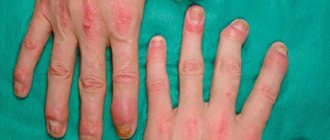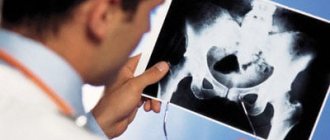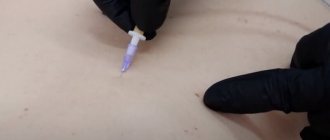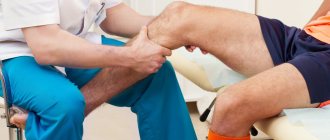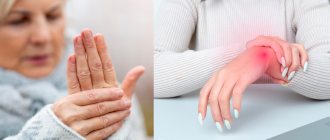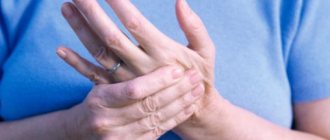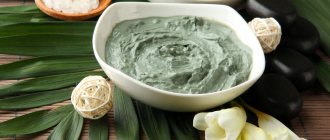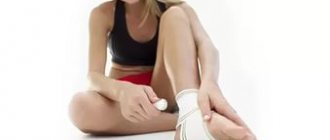Recommendations for physical activity and lifestyle for patients with joint diseases
Articles - April 21, 2021
Arthrosis: what is good for joints and what is harmful?
Healthy
Regular physical activity
For a joint to function well, its cartilage must receive nutrients in a timely manner. There are no blood vessels in the cartilage itself, so it receives its nutrition from surrounding tissues. And when we move, blood supply increases.
In addition, the growth of cartilage tissue is largely due to the mechanical factor. Cartilage tissue has self-healing properties, which are activated under the influence of adequate pressure from the articular surfaces.
Walking and swimming are especially helpful in this context. Dedicate at least an hour to them every day (with breaks), and the risk of arthrosis will decrease.
Spa treatment
The undoubted effect and benefit for arthrosis is from sea water. When immersed in it, body weight becomes lighter, and mineral salts have an additional positive effect. The joint tissues absorb the necessary natural components, their trophism and blood circulation improve. In addition, in the context of sanatorium treatment, mud baths will also be useful, as they also help unload the joint and supply cartilage and bone tissue with useful substances.
Alternation of work and rest
Joints can withstand quite a lot of stress, but they cannot “tolerate” it all the time. Therefore, during physical work, you need to take breaks every 1.5–2 hours.
It is useful to do stretching exercises in those areas that have been particularly stressed - this will reduce their tension and improve blood circulation. It's also a good idea to load up joints that don't move much during operation.
Shoes with soft elastic soles
Each step is essentially the impact of your foot on the ground. The soft elastic sole provides good shock absorption, the pressure on the intra-articular cartilage is reduced, which means the risk of their premature wear is reduced.
For the health of supporting joints, it is also important that the shoes are spacious, their uppers are soft enough, and their heels are no higher than 4 cm.
Harmful
Physical overload
With heavy physical activity, the pressure on the joints increases many times over. This leads to microtrauma of the cartilage and its premature destruction. The risk is especially great if work or training in the gym does not correspond to the person’s physical fitness.
Some types of fitness in themselves are harmful to joints. This includes weightlifting, step aerobics, running, and jumping.
Long, same type of work
Seamstresses often have arthrosis of the hands, and painters often have arthrosis of the shoulder joints. It’s simple: the first ones spend several hours in a row performing movements with their fingers, the second ones hold a roller or brush in their hand. Prolonged movements of the same type increase the load on the joint. As does staying in one position for a long time: squatting, bending over or... sitting in an office chair.
Don't forget to get up and stretch.
Fatty foods, fast food, sweets
Abuse of such food leads to accelerated weight gain. Extra pounds significantly increase the load on supporting joints - knees and hips.
It is no wonder that they are gradually beginning to collapse. Scientists have calculated that in obese women, arthrosis of the knee joints develops four times more often than in their slender peers, and is more severe.
Narrow shoes and high heels
Tight shoes put pressure on the joints of the feet, and this leads to metabolic disorders in them.
As for high heels, they harm not only the foot itself, but also the knee joints: when walking in stiletto heels, the pressure on their inner part increases. Therefore, such shoes are not suitable for daily wear; it is advisable to wear them only on special occasions, and even then only for 3-4 hours.
Important
The above tips are only relevant if the joint is healthy. If signs of arthrosis - stiffness, pain, limited range of motion - have already appeared, you need to act differently.
- Reduce the load on the affected area. If it is a leg joint, in addition to comfortable shoes, purchase orthopedic insoles. Use a cane if necessary. Do not work while squatting or kneeling. If the joints of your hands are damaged, do not wring out the laundry, do not knit - in general, do not put any strain on your fingers. In any case, do not lift heavy objects.
- Products that are healthy for the joint must be included in the diet. But relying only on them in case of illness is useless - destruction in cartilage occurs at such a pace that food cannot compensate for it. You need to take medications from the group of chondroprotectors. They contain the substances glucosamine and chondroitin sulfate, from which some components of cartilage are synthesized in the body. Chondroprotectors not only provide nourishment to cartilage, but also inhibit its destruction, make it more moist and elastic, and also reduce pain in the joint.
- You will have to give up long walks and fitness classes during exacerbations. But you need to perform special gymnastics that improves the functional state of the joint and strengthens the surrounding muscles. Under no circumstances should you exercise “through pain” - this accelerates the destruction of articular cartilage! Later, when you feel better during treatment, you can go swimming and walk.
The recommendations are extremely wrong.
- Strengthen the joint.
- “Knock out a wedge with a wedge.”
- “Disperse the salts.”
- “Overcoming the pain” - this often increases the pain syndrome, provokes inflammation and destruction of the joint.
Don't crawl on your knees at home - it destroys the joint!
Remember - regular exercise and relaxation will help more than medications or massage, rest and moderate exercise should be balanced, never put stress on the damaged area. Whether sitting or standing, be aware of your posture. Medical rehabilitation has accumulated extensive experience in the rehabilitation of patients with pathologies of the musculoskeletal system using physical therapy methods. Classes are conducted according to an individual program, under the supervision of a physical therapy doctor and experienced instructors. Author: V.I. Dikul
Diet can be harmful
Anyone who is losing weight first of all tries to go on a diet. It seems easy to choose one today – there are dozens, if not hundreds, of weight loss systems. But, alas, most of them are not suitable for those who have joint problems.
Article on the topic Losing weight without harm. How safe are popular diets?
There are many risk factors for the development of arthrosis. One of the most important is malnutrition of intra-articular cartilage. Without receiving the substances it needs, it cannot recover in a timely manner, and destruction processes begin to dominate in it. If, against this background, you “put” the body on a starvation diet, the situation will only get worse.
Mono-diets - losing weight on buckwheat, kefir, cottage cheese, vegetables - are absolutely not suitable for those suffering from arthrosis. Systems that involve distortions in the menu are also not suitable - the low-carbohydrate Dukan diet or the “Kremlevka” diet, a low-fat diet, vegetarianism. It is important to avoid extreme low-calorie diets, in which the total energy value of the daily diet is less than 1200 kcal.
What should I do?
Use soft dietary systems. One of the optimal ones is grazing, simpler - fractional feeding. This diet suggests that a person should eat at least every two hours, but in small portions. This approach allows you to avoid feelings of hunger, and therefore overeating, helps maintain metabolic activity and makes it possible to reduce the caloric content of your diet without unnecessary effort.
Article on the topic
Taking care of your joints. Who is at risk for early arthrosis and how to reduce the risks
Of course, it is important to choose the right products. Reduce your consumption of sweets and sugar to a minimum, give up fast food, and give preference to lean meats and low-fat dairy products. Include more vegetables and fruits in your menu, and don’t forget about cereals. Together with fractional meals, this will allow you to systematically lose about half a kilo per week - this is exactly the pace that is considered physiological.
When not to start training
First of all, you should not start training if your doctor categorically prohibits you from doing so. If you are not sure of his qualifications, get advice from several specialists: their opinions may differ.
Before you start training, assess your condition. You should not do Knee Arthritis: Be Cautious During These 5 Exercises if:
- the knee is swollen;
- you feel pain even at rest;
- pain makes you limp;
- the joint feels warm, the skin over it is red;
- the pain lasts more than two hours after exercise and worsens at night.
If such symptoms occur, you should definitely consult a doctor.
Video from Blogilates
Famous YouTube blogger Cassey Ho offers a series of short, effective videos for thighs and buttocks without squats and lunges. All of them are based on Pilates elements and take place in a horizontal position. Exercises can be made more difficult by performing them with weights on your legs. You can combine several workouts from the Blogilates YouTube channel into one program, or repeat one 10-minute workout in 3-4 circles for additional resistance.
Perfect Legs Workout POP Pilates (15 minutes)
5 Best Thigh Slimming Exercises (10 minutes)
Quick Burn Saddlebags Slimdown: Best Outer Thigh (9 minutes)
And also the following videos for ~10 minutes:
- Quick Burn Inner Thigh Workout: https://www.youtube.com/watch?v=SdCx8YYesW4
- Hips Butt & Thighs Super Shaper Workout: https://www.youtube.com/watch?v=HHn-oT3CEF4
- 8 min Bikini Thighs Workout: https://www.youtube.com/watch?v=bEQnmWd4D5E
A little about the role of muscles
The gluteal muscles in both women and men are made up of three separate ones: small, medium and large.
- The larger one, the most massive of this group, is diamond-shaped. As a rule, it completely covers the other two muscles and acts as the main one for working out, since this area of the body receives its volume precisely thanks to it.
- The middle one has a trigonal appearance and is located under the large one, but can be traced from behind and from the side. It plays a key role in the formation of volume in the upper buttocks and gives the butt “completeness”. And it is this part of the body that is responsible for the so-called dimples.
- The small one is the deepest of all. The shape is similar to the previous one, only thinner, and it is completely covered by other gluteal muscles.
Dumbbell Row
This is one of the most effective exercises for the buttocks for beginners to improve this area. It is aimed primarily at the biceps of the thigh and buttocks, and differs from the classics in that it is “those” muscles that are maximally involved here.
Execution: stand straight and place your feet shoulder-width apart, place dumbbells on the floor on the sides of your feet. This is followed by bending: the body is directed downwards, in the hands of a dumbbell, while the knees are slightly bent, and the back is straight, taut, like a well-tuned guitar string. Next, the body is raised along with the dumbbells to a level just above “parallel to the floor.” Then, as you inhale, it lowers again, holding the lower position for a couple of seconds, and as you exhale, it rises again.
At least 10 times, 2 approaches.
Important details:
- when performing, dumbbells seem to slide down the body; they must be kept extremely close to the surface of the thigh;
- the knees remain practically motionless to avoid unnecessary stress on them, only the back extensors work;
- The legs should not be straightened completely to avoid excessive stress on the hamstrings;
- Your arms should remain extended, holding the weight close to your hips.
Swing on the floor
Another exercise for the buttocks without stress on the knees looks very good as a finishing maneuver. It is mainly aimed at giving shape to the gluteus minimus and gluteus medius muscles.
Execution: lie on a flat surface on your left/right side and stretch your legs, one hand is at chest level on the floor, and the other elbow serves as a support. The straightened leg is abducted with maximum upward swing, as far as the physical compliance of the hip joint allows. The lower leg can be slightly bent to avoid swaying back and forth. Next, the leg returns to its original position.
10-15 repetitions, 2 sets.
Important details:
- by lowering the working leg, you can move it forward slightly, which will provide better stretching of the buttocks; and when lifting, slightly back, which will give a better contraction of the muscle.
Scissors
This exercise is also a safe option for pumping the buttocks for the knee area, since when performed they are fixed, only the desired area is tensed. The middle muscle of the fifth point is mainly involved here. And the press also works very well. So, it is also a very effective exercise without stress on the knees for weight loss, since it activates the digestive processes in the body.
Execution: lie on your back, place your hands (palms facing the floor) under your butt or strictly on the sides of the body, raise your straight, tense legs up, forming an angle of 90 degrees with respect to the body. While inhaling, spread your straight legs as far apart as possible, as far as stretching allows, hold for a second and, as you exhale, bring them to the starting point. The movement resembles the opening and closing of scissors.
15 repetitions, 2 sets.
Preventing knee pain
Any disease is easier to prevent than to treat. To keep your joints healthy for many years, follow simple rules of prevention:
- Do not neglect moderate physical activity to strengthen muscles and ligaments.
- Do not injure your joints with excessive loads.
- Follow a rational, healthy and nutritious diet.
- Don't get too cold.
- Wear comfortable and physiological shoes.
Take care of your joints and be healthy!
